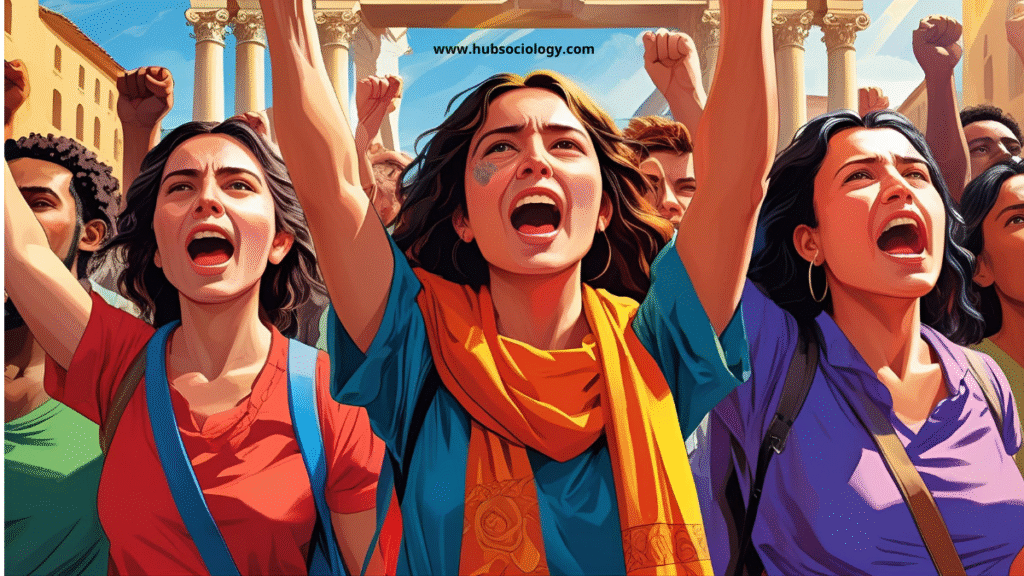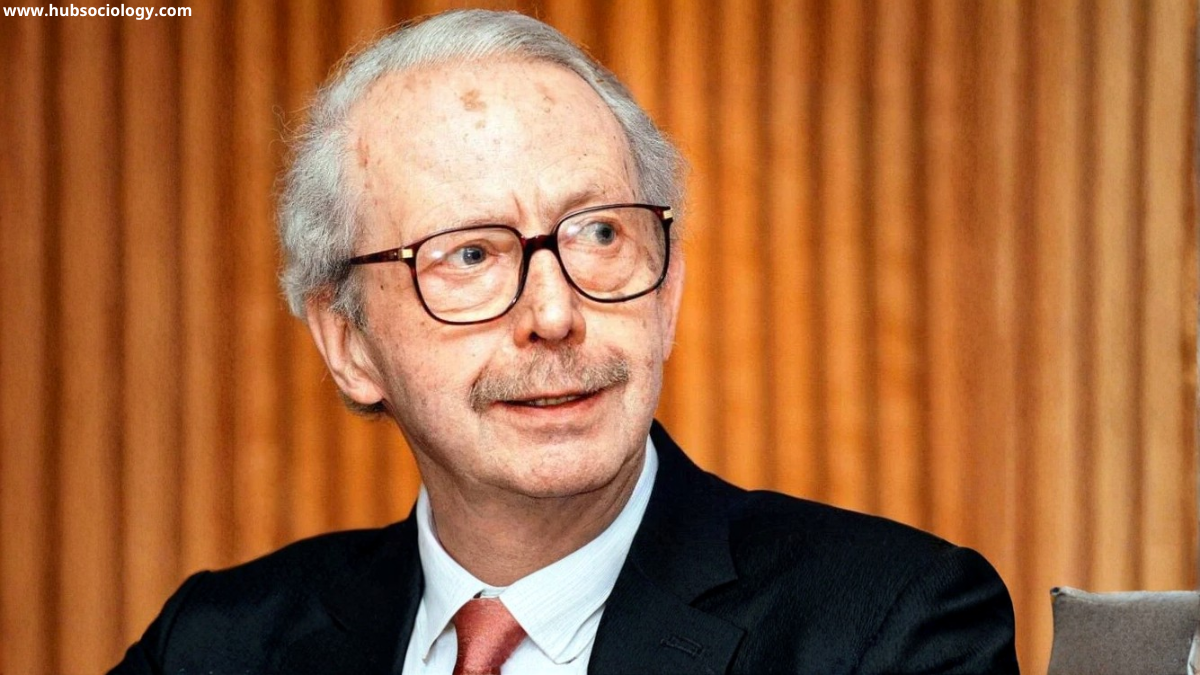Introduction
Ralf Dahrendorf (1929–2009) was a German-British sociologist, political scientist, and liberal thinker whose works significantly reshaped modern conflict theory in sociology. His most influential contribution lies in redefining social conflict within the framework of structural-functionalism and Marxism. At a time when Talcott Parsons and other functionalists emphasized social order, stability, and integration, Ralf Dahrendorf argued that conflict is not an abnormal or destructive phenomenon but rather a natural, dynamic, and necessary component of social life.
His conflict theory bridges Marx’s emphasis on class conflict with Weber’s attention to authority and bureaucracy, providing a modern sociological understanding of power relations, authority structures, and social change.

Background: From Consensus to Conflict
The mid-20th century sociological thought was largely dominated by structural-functionalism, particularly the ideas of Talcott Parsons. Functionalists viewed society as a complex system working harmoniously to maintain stability and order. They saw institutions—family, education, religion, and politics—as interdependent organs of a social body whose primary goal was equilibrium.
Ralf Dahrendorf challenged this view. He argued that focusing only on social stability gave an incomplete and distorted picture of society. In real social life, conflict, competition, and coercion are as significant as harmony and consensus. Society, according to Ralf Dahrendorf, is not a stable organism but a dynamic system where power and authority generate tensions and struggles between groups with unequal resources and opportunities.
Thus, Ralf Dahrendorf’s theory emerged as a corrective to the one-sidedness of functionalism, combining the insights of Marx’s conflict theory with modern sociological methods.
Dahrendorf’s Critique of Functionalism
Ralf Dahrendorf found three major limitations in the functionalist approach:
- Overemphasis on stability:
Functionalists assumed that society naturally seeks equilibrium, ignoring the role of conflict, change, and dissent. - Neglect of coercion and power:
Parsons viewed norms and values as the basis of order, while Dahrendorf emphasized authority and power relations as the true determinants of social structure. - Static model of society:
Functionalism focused on maintenance and reproduction of social systems, failing to explain historical and structural changes.
To counter these limitations, Dahrendorf proposed a theory in which conflict is institutionalized—that is, structured into social life itself through positions of authority and subordination.
Core Assumptions of Dahrendorf’s Conflict Theory
Dahrendorf’s theory, especially in his seminal work Class and Class Conflict in Industrial Society (1959), rests on several key assumptions:
- Society has two faces:
Every society displays both consensus and conflict. Consensus provides integration, while conflict generates change. Both are essential for understanding the dynamics of society. - Authority as the basis of social conflict:
Unlike Marx, who emphasized ownership of the means of production, Dahrendorf focused on authority relations—that is, who has legitimate power and who is subject to it. Authority, embedded in social roles and positions, creates divisions between those who command and those who obey. - Interest groups emerge from authority relations:
Dahrendorf suggested that within every social structure, individuals with similar authority positions develop common interests. For example, managers share interests different from workers. These interest groups can evolve into conflict groups when they become aware of their opposing goals. - Conflict is institutionalized:
Social conflicts are not always violent or chaotic. In modern societies, conflicts are managed and institutionalized through trade unions, political parties, laws, and negotiations—mechanisms that channel tensions into constructive social change. - Conflict leads to change:
For Dahrendorf, conflict is the engine of social transformation. Just as equilibrium maintains stability, conflict drives progress. Through conflict, societies adapt to new conditions, adjust power relations, and create more equitable structures.
Authority and Class Structure

In reinterpreting class conflict, Ralf Dahrendorf moved away from Marx’s economic determinism. He believed that in modern industrial societies, ownership is no longer the sole source of power; rather, authority determines class position.
He divided society into two basic groups:
- Those who possess authority (dominant or ruling class)
- Those who are subject to authority (subordinate class)
This authority-based classification can exist in various organizations—factories, schools, governments, or bureaucracies—wherever commands and obedience exist. Therefore, class conflict is not limited to capitalist versus worker but extends to multiple levels of institutional life.
In this sense, Dahrendorf offered a pluralistic and flexible model of class conflict, relevant to modern bureaucratic and democratic societies.
Latent and Manifest Interests
An essential component of Ralf Dahrendorf’s theory is the distinction between latent and manifest interests:
- Latent interests exist objectively due to one’s structural position in society (for instance, workers have a latent interest in better wages).
- Manifest interests appear when individuals or groups become conscious of these interests and organize to pursue them (like forming a union).
Social conflict emerges when latent interests become manifest, and individuals mobilize around shared goals. This process of group consciousness transforms passive inequality into active conflict.
Conflict and Social Change
For Dahrendorf, conflict is the source of social change. Unlike Marx, who predicted revolutionary overthrow of capitalism, Dahrendorf emphasized gradual, institutional change. Through legal, political, and organizational means, modern societies transform conflict into negotiation and reform.
Thus, he viewed conflict as both functional and inevitable:
- Functional, because it contributes to innovation and adaptation.
- Inevitable, because authority relations inherently produce inequality and tension.
This perspective connects conflict theory to democratic pluralism, highlighting the role of debate, dissent, and opposition in maintaining a just society.

Comparison with Marx
| Aspect | Karl Marx | Ralf Dahrendorf |
|---|---|---|
| Basis of Conflict | Economic ownership of means of production | Authority and power within social positions |
| Nature of Classes | Bourgeoisie vs. Proletariat | Those with authority vs. those without |
| Goal of Conflict | Revolutionary overthrow | Institutional reform and adjustment |
| View of Society | Historical materialism (economic focus) | Structural-functional realism (power focus) |
| Outcome of Conflict | Classless society | Continuous social change and negotiation |
Dahrendorf thus transformed Marx’s economic conflict theory into a sociological theory of authority and change, suitable for modern democratic and bureaucratic societies.
Relevance and Criticism
Relevance:
Dahrendorf’s theory remains highly relevant in analyzing:
- Power struggles within organizations, schools, or states.
- Labor-management relations.
- Political conflicts in democratic systems.
- Inequalities rooted not just in wealth but also in authority and decision-making.
His work paved the way for neo-conflict theory, influencing sociologists like Randall Collins and Lewis Coser, who emphasized the integrative and adaptive functions of conflict.
Criticism:
- Critics argue that Dahrendorf underestimates the role of economic inequality and overemphasizes authority.
- Some suggest that his theory is too abstract and neglects the emotional and cultural aspects of conflict.
- Marxists criticize him for diluting the revolutionary potential of class struggle, turning it into mere institutional reform.
Despite these critiques, Dahrendorf’s model remains one of the most comprehensive attempts to modernize conflict theory.
Conclusion
Ralf Dahrendorf’s conflict theory marked a turning point in sociological thought by reconciling order and conflict, stability and change. His central message—that authority structures produce inherent tensions leading to social transformation—captures the dynamic nature of modern societies. By replacing Marx’s economic determinism with a theory of power, authority, and institutional conflict, Dahrendorf provided a more realistic and flexible framework for understanding inequality, power relations, and progress in contemporary life.
In essence, Dahrendorf teaches that conflict is not the enemy of society—it is the heartbeat of social evolution.
Do you like this Article ? You Can follow as on :-
Facebook – https://www.facebook.com/hubsociology
Whatsapp Channel – https://whatsapp.com/channel/0029Vb6D8vGKWEKpJpu5QP0O
Gmail – hubsociology@gmail.com
Topic Related Questions
5 Marks Questions (Short Answer Type)
- Who was Ralf Dahrendorf and what is he known for in sociology?
- What is the main focus of Ralf Dahrendorf’s conflict theory?
- Mention two key differences between Marx’s and Dahrendorf’s conflict theories.
- What does Dahrendorf mean by “authority” in his theory of conflict?
- Define “latent interests” and “manifest interests” according to Dahrendorf.
- What role does conflict play in social change, according to Dahrendorf?
- State one criticism of Dahrendorf’s conflict theory.
- What does Dahrendorf mean by the statement “society has two faces – consensus and conflict”?
10 Marks Questions (Medium Answer Type)
- Discuss Ralf Dahrendorf’s critique of structural functionalism.
- Explain the concept of authority as the basis of social conflict in Dahrendorf’s theory.
- Describe how Dahrendorf’s theory of class differs from Marx’s concept of class conflict.
- What are the main assumptions of Dahrendorf’s conflict theory?
- Explain the process by which latent interests become manifest and lead to social conflict.
- Examine how conflict is institutionalized in modern society according to Dahrendorf.
- What are the similarities and differences between Dahrendorf’s and Coser’s views on social conflict?
15 Marks Questions (Long Answer / Essay Type)
- Critically examine Ralf Dahrendorf’s conflict theory as an alternative to functionalism.
- Discuss in detail Dahrendorf’s view on authority, class structure, and social change.
- Compare and contrast the conflict theories of Karl Marx and Ralf Dahrendorf.
- Evaluate the relevance of Dahrendorf’s conflict theory in understanding modern industrial society.
- “Conflict is not only inevitable but necessary for social progress.” Explain this statement in the light of Dahrendorf’s conflict theory.
- Analyze Dahrendorf’s distinction between latent and manifest interests and its significance in explaining class conflict.
- Assess the major criticisms of Ralf Dahrendorf’s conflict theory and discuss its contemporary significance in sociology.
